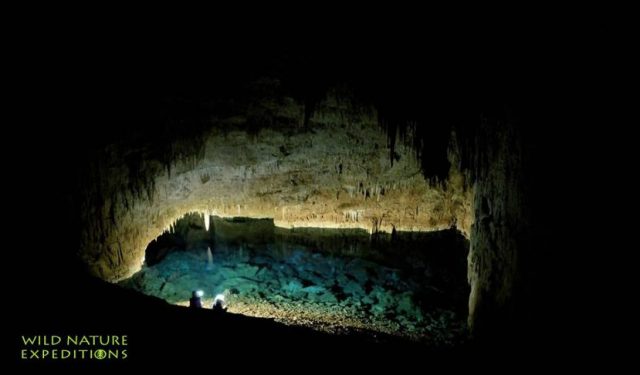Ελπίζω ο νέος δήμαρχος να βλέπει και να ακούει ,ελπίζω ο νέος δήμαρχος επιτέλους να δει τα χρώματα του ουράνιου τόξου…. ο τουρισμός δεν είναι μόνο μαύρο άσπρο , συγχαρητήρια στα παιδία για το Υπέροχο video.
Από το fb του Makis Sotiropoulos
History The first speleological expeditions in the area of Sami were initiated in 1951 by the Greek Speleology Company founters, Giannis Petrohilos and his wife Anna. The expeditions lasted years, but the highlight was, when Austrian speleologists joined the mission, in 1963. In this mission, they tried to determine if there was a connection among all the cave systems of the island. They acieved that, by using a special chemical substance, called Ouranini. The chemical was released in the Chasm of Argostoli and after two weeks, traces of it, appeared in Karavomilos and Melissani lake in Sami, as an obvious proof that there is a vast connection of all the caves and the water flows verticaly through the island with a west to east direction. In 1987 and after a petition by the local president of Poulata village, the Speleology and Paleoantrhopology organisation of Greece initiated an expedition in the area and confirmed that there are noumerous caves in the region and procceded to the exploration of Agalaki chasm. The mission was parted in two seperate projects, the first started at 25th of December 1988 till 11 of january 1989 and from 25th of April 1989 till 25th of May 1990. Noumerous chasms and caves where explored and the speleologists concluded that the caves where flooded due to the sinking of the island. The earthquakes and the rise of the sea waters also contributed. In detail, the caves that were mapped, were; Melissani (240m. length and 33m. depth), Agia Eleousa (254m. length and 29m. depth and 112m. lenth and 12m. depth) and finally karavomilos (240m. length and 13m. depth). Information about Chiridoni – Sotira cave Chiridoni cave is located very close to Poulata village in Kefalonia and is close to many other caves and chasms in the area. One needs to drive through a gravel road, open the gate of a private property, that holds goats and sheeps inside and descent via a steep hill. It is necessary for the divers to carry the equipment with an all wheels drive vechicle. Once the divers are in the property, they have to carry the equipment in very difficult conditions, through thick vegetation and loose gravel ground, with angles that may reach 45-50 degrees. The entrance of the cave lays almost 250 meters from where the car is parked, making the equipment transportation a painstacking experience, and it is also important to wear climbing equipment and safety gear. Once the divers enter the water, everything changes completely. The huge Chambers of the cave change quickly and are decorated with enormous stalactites and stalagmites. The size of the chambers is so extented, that even the powerfull video lights where not enough to completely light the space to its full capacity. The water is very transparent and has a steady temperature of 14 degrees, throughout the year. After just 190 meters into the cave, the divers reached a 10 meter high chamber, that has a big and unsteady rockfall on its side, that leads to a small hole, from where light comes in. A surface servay the following day, showed the hole leaded to the old Sotira church and It is also the only entrance for the hundreds of bats that live in the cave. Continuing further, the divers saw many rocks that had been detached by the roof, due to seismic activity. Something special, is that in the cave, there is a species of grasshopper, that is adopted to the environment, by completely loosing its wings and having eyes capable of seeing in absolut darkness. During filming, we had the opportunity to record an eel, wondering close to the entrance of the cave. In conclusion, Chiridoni is the most interesting, beautiful and intense caving experience to date, for our team. Source: Municipality of culture – Man and Speleoenvironement, Athens 1998





